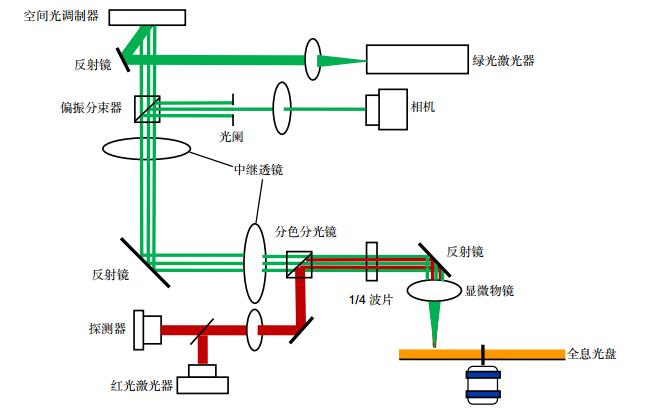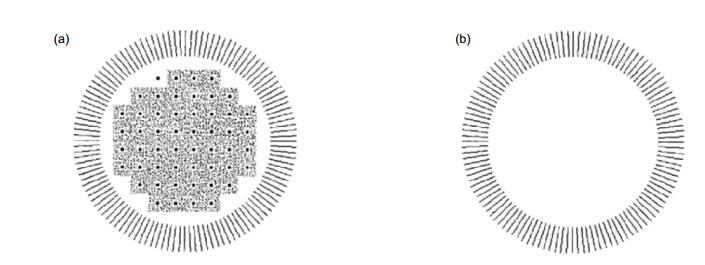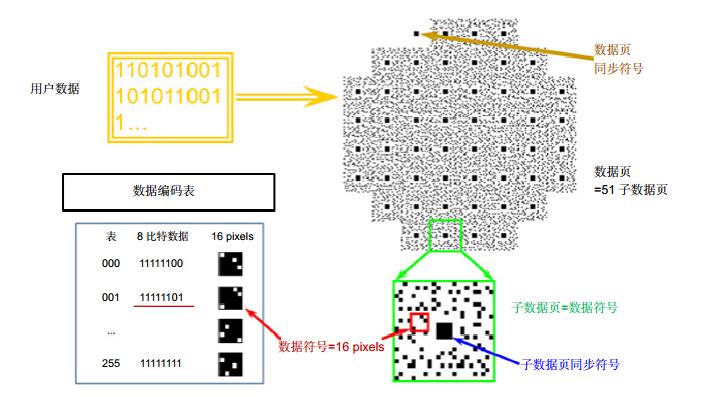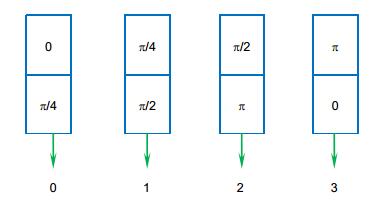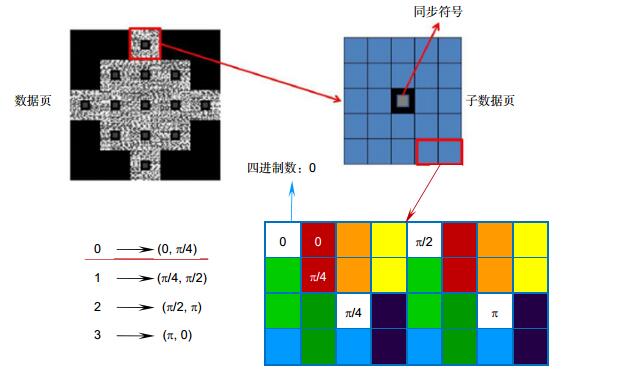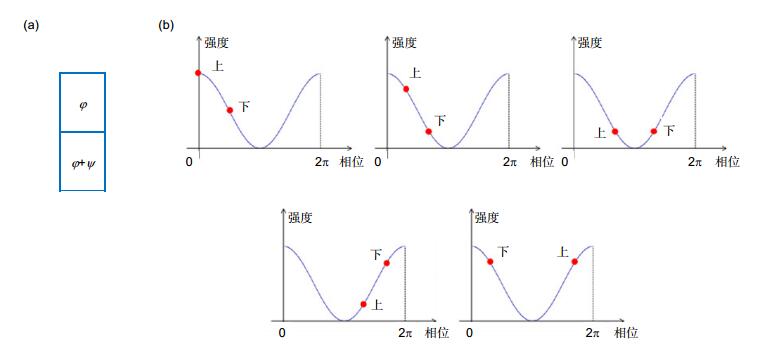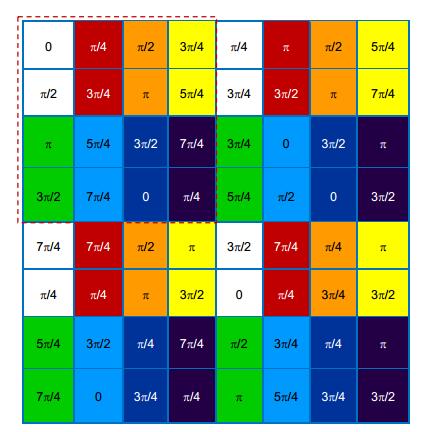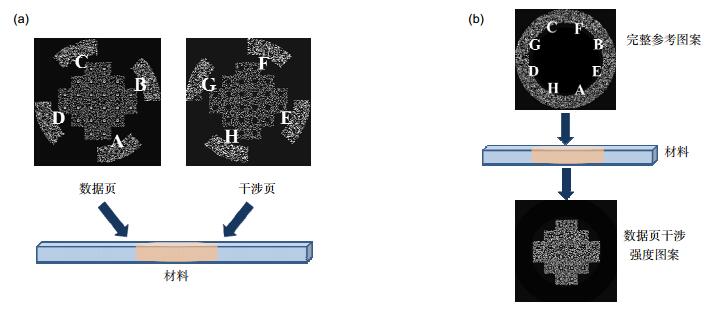-
摘要
从体全息存储原理出发,列举了体全息存储的技术和主要的几种系统结构,并就同轴式全息存储系统原理、系统结构、编码方式进行了详细的介绍分析。在未有成熟的相位编码方式的情况下,对基于相位调制的同轴全息存储系统的两种相位编码方式进行了分析评价,这两种相位编码方式对全息存储中相位编码的可能实现方式进行了有效补充,其组合式相位编码方式与传统振幅编码相比提高了编码率且降低了误码率。另外,介绍和分析了一种可以有效减少材料消耗并提高存储密度的多阶复振幅调制的同轴全息存储系统,并对其系统表现性能进行评价。综合评价得出,更合理的编码方式、适当的调制手段和抑制噪声仍是现在全息存储研究中亟待解决的问题。
Abstract
Based on the principle of the volume holographic data storage, the technologies and its main systems of holographic data storage are reviewed. The principle, system structure and coding method of the collinear holographic data storage system are introduced and analyzed. In the absence of mature phase encoding principle, two kinds of phase encoding of phase-modulated collinear holographic data storage systems are analyzed and evaluated. These two phase encoding methods effectively complement the possible methods of phase encoding in holographic storage. The pairs-phase-encoding improves the code rate and reduces the error rate compared with traditional encoding. Moreover, a multilevel complex amplitude modulated collinear holographic storage system is introduced, which can efficiently reduce material consumption and increases storage capacity. Moreover, its system performance is evaluated. Consequently, more reasonable coding method, appropriate modulation and suppression of noise, are still urgent problems in the researching of holographic data storage technology.
-
Key words:
- volume holographic storage /
- phase modulation /
- holographic encoding /
- phase retrieve
-
Overview

Overview: Based on the principle of the volume holographic data storage, the technologies and its main systems of holographic data storage are reviewed in this paper. The studied holographic storage system is set to collinear holographic storage system due to its compact and anti-interference. The principle, system structure and coding method of the collinear holographic data storage system are introduced and analyzed. In the traditional holographic storage system, only pure amplitude information of light is used for carrying information, which is a kind of waste of multiple modulation properties of light. In order to improve the encoding rate and storage density of holographic storage, the utilization of phase modulation is considered. In spite of using phase modulation can efficiently improve the encoding rate and storage density, the recognized encoding method of phase modulation is still unknown. In the absence of mature phase encoding principle, research group of Beijing Institute of Technology proposed two kinds of new phase encoding of phase-modulated collinear holographic data storage systems. Unlike traditional encoding principle of considering single pixel as a data point, the unequal interval four-order-phase encoding and equal interval four-order-phase encoding use pairs of pixels as one data point and use pure phase modulation to the data page. These two methods take advantage of the relationship between the two pixels of one pair to represent the information rather than the value of each pixel. Compared with the traditional amplitude modulation data encoding, the method using unequally spaced quaternary phase encoding can effectively improves the encoding rate of a data page and controls the error rate in a relatively low level. In addition, combing the unequal interval four-order-phase encoding method, the group improved this phase encoding method and introduced the equal interval four-order-phase encoding method. The coding range is extended from the original 0~π to 0~2π. Besides the pure phase modulation, the group also studied the feasibility of complex amplitude modulation. A multilevel complex amplitude modulated collinear holographic storage system is proposed, which can efficiently reduce material consumption and increase storage capacity. It locks the data page and the corresponding phase-retrieval interference beam together at the same location with sequential recording process, and makes the system more compact and phase retrieval easier. In addition, the method was experimentally evaluated with two SLMs. For further improving data storage density, an orthogonal reference encoding multiplexing method at same position of medium is proposed. Although the encoding rate is improved by using unequal and equal interval four-order-phase ending method and the then storage density is improved by complex amplitude holographic storage system, more reasonable coding method, appropriate modulation and suppression of noise, which are still urgent problems in the researching of holographic data storage technology.
-

-
图 7 (a) 相位编码对; (b)干涉后编码对中两像素强度关系分布示意图
Figure 7. (a) Phase encoding pair; (b) Intensity relationship of two pixels of encoding pair after interference[18]
-
参考文献
[1] van Heerden P J. Theory of optical information storage in solids[J]. Applied Optics, 1963, 2(4): 393‒400. doi: 10.1364/AO.2.000393
[2] Ashley J, Bernal M P, Burr G W, et al. Holographic data storage technology[J]. IBM Journal of Research and Development, 2000, 44(3): 341-368. doi: 10.1147/rd.443.0341
[3] Horimai H, Tan X D, Li J. Collinear holography[J]. Applied Optics, 2005, 44(13): 2575-2579. doi: 10.1364/AO.44.002575
[4] 谭小地, 堀米秀嘉.同轴式光全息存储技术及其系统[J].光学学报, 2006, 26(6): 827-830. doi: 10.3321/j.issn:0253-2239.2006.06.006
Tan X D, Horimai H. Collinear holographic information storage technologies and system[J]. Acta Optica Sinica, 2006, 26(6): 827-830. doi: 10.3321/j.issn:0253-2239.2006.06.006
[5] Orlov S S, Phillips W, Bjornson E, et al. Ultra-high transfer rate high capacity holographic disk digital data storage system[C]//Proceedings 29th Applied Imagery Pattern Recognition Workshop, 2000: 71.
[6] Hwang E, Yoon P, Kim N, et al. Real-time video demonstration of holographic disk data storage system[J]. Proceedings of SPIE, 2006, 6282: 628205. doi: 10.1117/12.685163
[7] Hoskins A, Ihas B, Anderson K, et al. Monocular architecture[J]. Japanese Journal of Applied Physics, 2008, 47(7): 5912-5914. doi: 10.1143/JJAP.47.5912
[8] Rhee U S, Caulfield H J, Vikram C S, et al. Dynamics of hologram recording in DuPont photopolymer[J]. Applied Optics, 1995, 34(5): 846-853. doi: 10.1364/AO.34.000846
[9] Blaya S, Carretero L, Mallavia R, et al. Optimization of an acrylamide-based dry film used for holographic recording[J]. Applied Optics, 1998, 37(32): 7604-7610. doi: 10.1364/AO.37.007604
[10] Hsu K Y, Lin S H. Holographic data storage using photopolymer[J]. Proceedings of SPIE, 2003, 5206: 142-148. doi: 10.1117/12.507707
[11] Liu Y, Fan F L, Hong Y F, et al. Volume holographic recording in Irgacure 784-doped PMMA photopolymer[J]. Optics Express, 2017, 25(17): 20654-20662. doi: 10.1364/OE.25.020654
[12] Li J H, Cao L C, Gu H R, et al. Orthogonal-reference-pattern- modulated shift multiplexing for collinear holographic data storage[J]. Optics Letters, 2012, 37(5): 936-938. doi: 10.1364/OL.37.000936
[13] Gu H R, Cao L C, He Q S, et al. A two-dimensional constant-weight sparse modulation code for volume holographic data storage[J]. Journal of Zhejiang University SCIENCE C, 2011, 12(5): 430-435. doi: 10.1631/jzus.C1010246
[14] Gu H R, Cao L C, He Q S, et al. Three-dimensional error correcting with matched interleaving for holographic data storage[J]. Proceedings of SPIE, 2011, 8157: 81570K. doi: 10.1117/12.893119
[15] Shannon C E. A mathematical theory of communication[J]. Bell system Technical Journal, 1948, 27(3): 379-423. doi: 10.1002/bltj.1948.27.issue-3
[16] 傅祖芸, 赵建中.信息论与编码[M].北京:电子工业出版社, 2014.
Fu Z Y, Zhao J Z. Information theory and coding[M]. Beijing: Publishing House of Electronics Industry, 2014.
[17] Xu K, Huang Y, Lin X, et al. Unequally spaced four levels phase encoding in holographic data storage[J]. Optical Review, 2016, 23(6): 1004-1009. doi: 10.1007/s10043-016-0263-1
[18] 刘金岩.同轴全息存储相位编码的研究[D].北京: 北京理工大学, 2017.
[19] Liu J P, Horimai H, Lin X, et al. Phase modulated high density collinear holographic data storage system with phase-retrieval reference beam locking and orthogonal reference encoding[J]. Optics Express, 2018, 26(4): 3828-3838. doi: 10.1364/OE.26.003828
-
访问统计


 E-mail Alert
E-mail Alert RSS
RSS

 下载:
下载:
